Resources by Brenda Llewellyn Ihssen
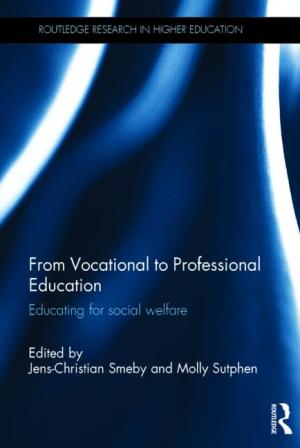
It is not often that edited volumes dedicated to teaching and learning are so easily able to cross the Atlantic. Happily, conference activity funded by the Research Council of Norway provided opportunity for Molly Sutphen of the University of North Carolina and Jens-Christian Smeby of Oslo and Akershus University College of Applied Sciences to collaborate with researchers in the field of education. In a series of international conversations, scholars addressed challenges faced by students in professional schools in the fields of education, social work, and healthcare (3) as a result of academic drift and the subsequent institutionalization of vocational programs into higher education (7). The purposes of this well organized, beautifully written, and coherent collection of essays is to identify these difficulties within their historical context, and – in light of current disciplinary methods – suggest recommendations for future development of the education of professionals. A near-constant defense of liberal arts education as of late has been accompanied since the mid-twentieth century with added pressure of assimilation of professional training in universities, specifically in the fields mentioned above. The professionalization of these programs is complex and the challenges are significant, facts often unknown to other disciplines; professional educators, to name one example, must master a complex knowledge base as well as curricular, pedagogical, and administrative abilities. Central to the success of these tasks within a higher educational setting, writes Smeby in his introductory chapter “Academic Drift in Vocational Education?” (7-25), is the necessity of “perceived coherence” on the part of the students that there are meaningful relationships between both theoretic and applied components of their education (25). But students are not the only ones looking for signs of perceived coherence; the transfer of the locale of professional education has had implications not only for students, but for faculty and the wider university culture as well. In Ala Agevall and Gunnar Olofsson’s “Tensions Between Academic and Vocational Demands” (26-49), three aspects of the transformation of higher education as a result of the academic drift are identified as worthy of note: cultural changes to university systems as they relate to hiring practices and student population; the way in which the link to the university system has altered perceptions of the professions; and the shift in emphasis of the university culture towards professional programs as a matter of concern, vis-à-vis credentials and training. After tracing generations of welfare professional programs in Sweden (28-30), the authors identify principle ways in which institutions of higher education can combine an academic education with professional mastery (31-35), followed by a case study in a Swedish setting. Subsequent chapters on the benefits of cross-field studies for professional students (Little, 50-69), coherence as it relates to bridging theory and practice (Heggen, Smeby, and Vågan, 70-88 and Laursen, 89-104), assumptions that emerge about and within research-based education (Kyvik, Vågan, Prøitz, and Aamodt, 105-23), use of evidence-based methods (Rasmussen, 124-36), dialogical pedagogies (Sutphen and Heggen, 137-45), and international trends in teacher education (Conway and Munthe, 146-63) are followed by a conclusion by the editors. The conclusion offers recommendations for models of pedagogies of coherence that include: “third space” learning (168-69); increased opportunity for research on practice (169); use of cases as opportunity for reflection on potential workplace experiences (169); greater collaboration between higher education and professional placement (169); and finally, educational leadership that is mindful of fragmentation (169-70). I am aware that the purpose of a book review in a journal for teaching theology and religion is to consider how it relates to or is useful for those in the fields of religion, theology, and religious studies. I am of the opinion – however optimistic it might be – that any analysis of education or pedagogy might be applied to any field, and this is true for Smeby and Sutphen’s edited volume on professional education, for this collection is particularly helpful at explaining some of the tensions that exist within universities and colleges around the coherence of the general education of professional students, and the way shifts in higher education have altered the landscape of the educational system, worldwide. In a liberal arts setting, the reality is that students in religion courses are most often there because the university has determined that the study of religion is essential for their general education; it is useful for both parties to recognize that students are seeking coherence and relevancy and are attempting to bridge theory and practice as much as their professors. . While one might hope that the relevancy of an education in the history or theology of any religion would be immediately obvious, nevertheless mindfulness of our students’ majors, disciplinary affiliations, professional aspirations, and desires for coherence can assist the religion professor in shaping her curriculum in such a way to make that applicability more transparent.
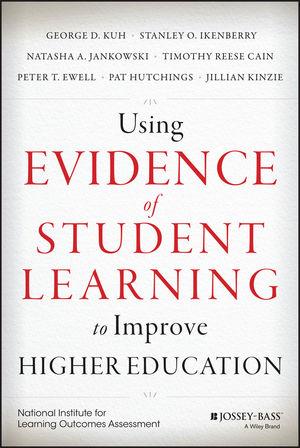
Increasing skepticism regarding the value of traditional grading, mounting student debt, and low degree completion rates has led to escalating pressure on North American universities to provide evidence of assessment of student learning. Beyond standard letter grades, it is claimed, there are methods that can provide tangible proof that students are – or are not – learning (Astin, “The Promise and Peril of Outcomes Assessment,” The Chronicle of Higher Education). Ideally this information assists universities in shaping the “new normal” of higher education (2). This new normal, the authors argue, often imposes assessment from above; as a result, many university faculty are either apart from assessment-measuring or are excluded from the conversation regarding why additional assessment measures might be needed and how to use the information once it is gained. This latter point is the focus of this collection of essays, Using Evidence of Student Learning to Improve Higher Education. Written with various assessors in mind – from faculty to governing boards (12-17) – the essays are all rooted in the authors’ collective desire to make assessments consequential (20); only by putting assessment data to work for the institution will the data be made meaningful. Kuh and Ikenberry, the principle co-investigators of the project (xiv), organize the topic of student assessment as a tool for the advancement of higher education into three helpful modules. After an introductory chapter that highlights the need for university campuses to move from compliance to active ownership in the assessment process (1-26), the collection is divided into three parts, each of which contains articles that pertain specifically to the various constituencies. “Part One: Making Assessment Work” (27-96) is comprised of three chapters. Hutchings, Kinzie, and Kuh’s “Evidence of Student Learning: What Counts and What Matters for Improvement” (27-50) highlights the variety of assessment methods as well as their respective strengths and limitations. This chapter reminds the reader that whether or not the vocabulary of “assessment” is employed, faculty are always engaged in the process of assessing student learning through assignments, surveys, exams, rubrics, and portfolios, even if not all recipients of this data consider it as such. This is a helpful chapter for religion faculty who might struggle with questions about how to assess student learning in a subject often fraught with individual meaning and significance and that stands quite far, by comparison, from a student’s relationship with other subjects (such as algebra or physical education). According to Kinzie, Hutchings, and Jankowski, an essential – and often neglected – second step in the assessment process is making use of the data. In “Fostering Greater Use of Assessment Results: Principles for Effective Practice” (51-72) and “Making Assessment Consequential: Organizing to Yield Results” (73-91), the authors carefully distinguish between “doing” assessment and “using” assessment; beginning with a brief history of the process, they trace effective use from the microcosm of a single course to the macrocosm of an entire institution. In particular, they emphasize that the collection of assessment data and its use must ultimately fold back on itself, closing the continuous loop of evaluation that ends with the next question: “What was the impact of the change?” (71). Methodically similar to the first section, “Part Two: Who Cares? Key Stakeholders” (95-182), draws a valuable line in assessment-use analysis through four chapters. Casting their net quite widely, authors Cain, Hutchings, Ewell, Ikenberry, Jankowski, and Kinzie collectively affirm that faculty assessment is at the heart of educational development, assessment impetus must shift from exterior motivation to interior, and that assessment must be supported at all levels of the institution. For the past three decades, Kinzie, Ikenberry, and Ewell conclude in “The Bigger Picture: Student Learning Outcomes, Assessment and External Entities” (160-82), external bodies have been imposing assessment data collection, much of which has consisted of a bare minimum of electronic catalogues; while this external interest is warranted, those who benefit most by harnessing evidence of student learning are those who stand closest to those being assessed: faculty. The final section, “Part Three: What Now? Focusing Assessment on Learning” (183-236), addresses two noteworthy elements of assessment projects: the weariness that plagues faculty who often face overwhelming demands for greater and more evaluation of their profession, and ways in which assessment results can be shared with appropriate constituencies. While Kuh and Hutchings’ “Assessment and Initiative Fatigue: Keeping the Focus on Learning” (183-200) highlights strategies to avoiding the inevitable fatigue by suggesting that faculty share the burden of assessment, that short-term projects be considered, that clear links to campus learning goals be identified prior to the work beginning, and that the work of assessment be balanced by scaling back other tasks. While the final chapter, Jankowski and Cain’s “From Compliance Reporting to Effective Communication” (201-19), focuses on the definitions and use of transparency in the successful relation of assessment data, the multi-authored conclusion, “Making Assessment Matter” (220-36), both summarizes the current context of assessment in North America, and offers thoughts regarding emerging trends and forces in higher education. The American Academy of Religion White Paper, “The Religion Major and Liberal Education,” rightly claims that assessment in religion, religious studies, and theology is challenging due to a variety of important factors, including the constantly evolving nature of the discipline, the interdisciplinarity of religious studies, the lack of accrediting bodies to supervise content, and the ambiguity regarding career paths for graduates in the field (https://www.aarweb.org/AARMBR/AARMBR/Publications-and-News-/Data-and-Studies-/Teagle-Study.aspx). Nevertheless, religion, religious studies, and theology departments must face the challenge of assessment initiatives the same as any department; on a purely pragmatic level, it would be helpful to face the challenge of assessment with the valuable essays provided in Kuh and Ikenberry’s collection.
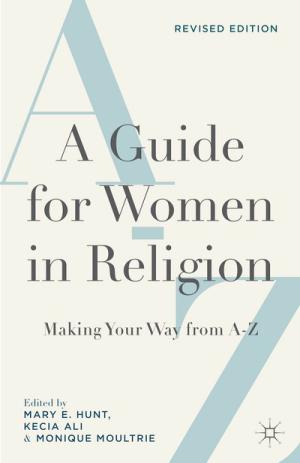
For many women, the transition into and through a career is not nearly as straight as a recitation from A to Z. To their eternal credit, Hunt, Ali, and Moultrie emphasize in almost every entry of their Guide for Women in Religion that the path for women is neither linear nor chronological. Despite vast political, legal, cultural, educational, and professional changes by and for women in the most recent decades, women are best served approaching their education and careers in this academic field of religion and religious studies equipped with this valuable, updated Guide for Women in Religion. Feminist theologian, professor, and human rights activist Dr. Mary L. Hunt edited the first edition of A Guide for Women in Religion in 2004 (Palgrave). That book’s existence was necessitated by some of the troubling realities that women face in the academic world of religion and religious studies; sadly, from undergraduate through tenured professorships, many – if not most – women encounter some form of the intersections of “sexism, racism, Christian hegemony, economic injustice, Postcolonialism, and discrimination based on sexual choices” (1). The authors note that encountering any of these issues can be made all the more difficult by women in power positions who replicate many of the abusive behaviors that are deeply entrenched in academic cultures (18, 131), behaviors which have for far too long tolerated, ignored and even sometimes rewarded. The second edition (2014) builds on a fine first edition, and offers an updated Resource section (201-04) that tackles the integration of technology and its implications for women in the field (especially as it relates to online teaching [120]), and extends advice that is applicable to an audience that spans from the first-year, undergraduate student to the emerita professor. In addition to an “Editor’s Introduction to the Revised Edition” (1-2), the “Introduction to the Original Guide” (3-8) is also retained, which provides useful history for the Guide’s original purpose: as more women entered the field, dominant realities that prevented female success resulted in increased questioning and subsequent development for women to “network, discuss common concerns, and share skills” (4). One of the many changes and tools introduced in the 1970s and 1980s was the Guide to the Perplexing: A Survival Manual for Women in Religious Studies (Oxford University Press). This vital guide was written to encourage pro-active approaches for female students and scholars, to educate women and men on the realities that women face in the field, and – perhaps most valuable – to name the isolating hardships that, for women, often result in self-blame, self-criticism, and loss of confidence. One of the more valuable and important insights that this book highlights is the way in which Christian hegemony dominates the field of religion (especially 35-37) and the multiple ways hegemony is manifest, from stages as vast as the AAR/SBL guild to the intimacy of the classroom. Made all the more challenging by Postcolonial understandings of religions as systems of belief which stand in opposition to one another (127-28), and all the more confusing when institutions welcome feminism within limits (35), women in the field of religion encounter Christian hegemony at the same time questions of social justice, diversity, race, and gender are being vigorously engaged (36). Guides such as this are not just useful, they are essential. Academia is, as the authors of the previous Guide wrote in 1992, a “minefield of stereotypes and prejudices,” (Guide to the Perplexing, 30) and hostilities that women face continue to be (not so) clear and present dangers. Consequently, this updated Guide for Women in Religion continues to remain relevant and necessary, despite the sweeping achievements of women in the field. While it is obvious that women engaged in the study or work of religion are the primary audience of this book, individuals of all gender identities would do well to pay heed to its contents; ignoring the importance of this guide for all people in the field of religion and religious studies does a disservice to the primary audience.
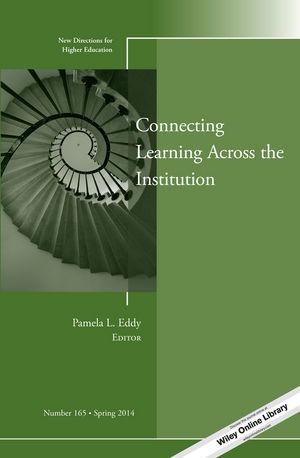
Through a framework of three segments that set educational context, demonstrate integration, and provide planning models, Pamela L. Eddy’s edited volume of essays explores the question of learning across the institution by framing research around questions that consider stakeholders, institutional populations, and applicability of theoretical approaches to learning. Offering both a scholarly focus and practical applicability, this volume brings together and advances the way faculty think about learning, it highlights the common features that stakeholders share, and presents insight about how to support faculty learning and development. In the initial section, “Setting the Context,” Barber’s essay “Integration of Learning Model: How College Students Integrate Learning” provides a helpful introduction to the study of integrated learning for undergraduate student populations. He identifies the issues contemporary students face – compartmentalization, expanding digital tools, lack of reflection – and urges faculty to develop a theory of learning that is both intentional and explicit in its awareness of these issues and mindful of the shifting demographics of the undergraduate. Further challenges to faculty vision are suggested by Eddy’s “Faculty as Border Crossers,” whose analysis of Fulbright faculty reveals that faculty are forced to confront their assumptions about teaching and learning in light of direct exposure to new environments, which can include language, systems, space, or values. Closer to home, Moor and Mendez’s “Civic Engagement and Organizational Learning Strategies for Student Success” proposes that a deliberate approach to cultivation of civic values both inside and outside the classroom holds great potential for integrated learning and student success. After Leslie’s chapter on stakeholder impressions and demands regarding learning and assessment, Wawryznski and Baldwin’s essay encourages academic leaders (beginning with chief academic officers) to model and promote (both in and outside of the classroom) the types of “high-impact practices” that make for a holistic approach to higher education. Zakrajsek’s “Developing Learning in Faculty: Seeking Expert Assistance from Colleagues,” encourages a return among faculty to the types of learning cultures that are formulated within a graduate experience. In addition to seeking feedback regarding classroom teaching, Zakrajsek reminds the reader that disciplinary expertise aside, an interprofessional approach to the academic culture is recommended for both student and professorial success. The concluding essay in the second section, VanDerLinden’s “Blended Learning as Transformational Institutional Learning,” encourages thoughtful consideration of hybrid course models that include critical reflection at multiple levels in order to achieve the greatest level of success: student, professorial, and institutional. The final portion of this collection addresses consequences of the theories and practices outlined thus far. While authors Amey, Neumann, and Bolitzer propose organizational frameworks and strategies, Chance identifies connections and key issues that bring all of the groups identified in this volume into conversation with one another. The notion that faculty must scaffold disciplinary content with institutional and civic values is growing increasingly common. Irrespective of Fulbright activity, more and more faculty are being challenged to be “border crossers” within their field and across the campus. This volume of essays provides an excellent start to considering both the theoretical and the practical elements and implications of these shifts in higher education in North America.
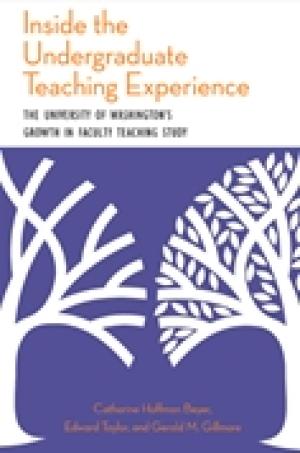
University of Washington colleagues and scholars Beyer, Taylor, and Gillmore began their work in assessment with a rather simple – but important – question: “Without external pressure to do so, do faculty make changes to their teaching?” (17). To answer this and the subsequent follow-ups (“If so, what changes?” and “Why?”), they engaged in an extensive, qualitative study that drew from a sample of fifty-five male and female faculty members and eight graduate students of various ethnicities and in different stages of their professional careers. The findings of their study, they argue, challenge the prevailing image of professors as disengaged from anything other than their research, and show that faculty remain deeply engaged simultaneously with both their research and with current pedagogical methods, best practices, new and emerging technologies, and – above all – the development of critical engagement for their students with their respective disciplines. Perhaps most surprising, they argue, is that the findings of this study demonstrate that professors exhibit a desire for improved teaching even though most have not received teaching-training and even in the absence of external pressures. Then why change? A faculty member makes it through the semester, notes intact; what, then, stimulates the need for any change at all? Beyer, Taylor, and Gillmore’s findings reveal that even with increased interest in the development of “best practices” among faculty at institutions of higher learning (91), change in the classroom is driven by interaction between faculty and their students (91), and generally takes one of two forms: internal or external. In the case of internal change, faculty work to introduce methods that encourage greater, earlier, and deeper engagement with their own course content. This type of change is often induced by assessment, observation, or conversation between faculty and student. External changes, on the other hand, are introduced as a result of workshop activity, collegial conversation, and observation. It is worth noting that external change accounts for the smallest percentage of reasons for change, a mere 12 percent (105). This book is valuable for revealing in quantifiable terms what many in this field already know; that teaching is a dynamic and malleable activity. But what it also reveals is that the greatest changes in the classroom occur when professors are tuned into the intimate voice of their own discipline, within the context of their own classroom. External influences and opportunities are important, but what appears to be more important is the willingness of a professor to pay rigorous attention to the needs of particular groups of learners, at particular moments in time. And though it should not be necessary to provide evidence of how hard professors work and how much they care, it is nice to have this study as evidence.